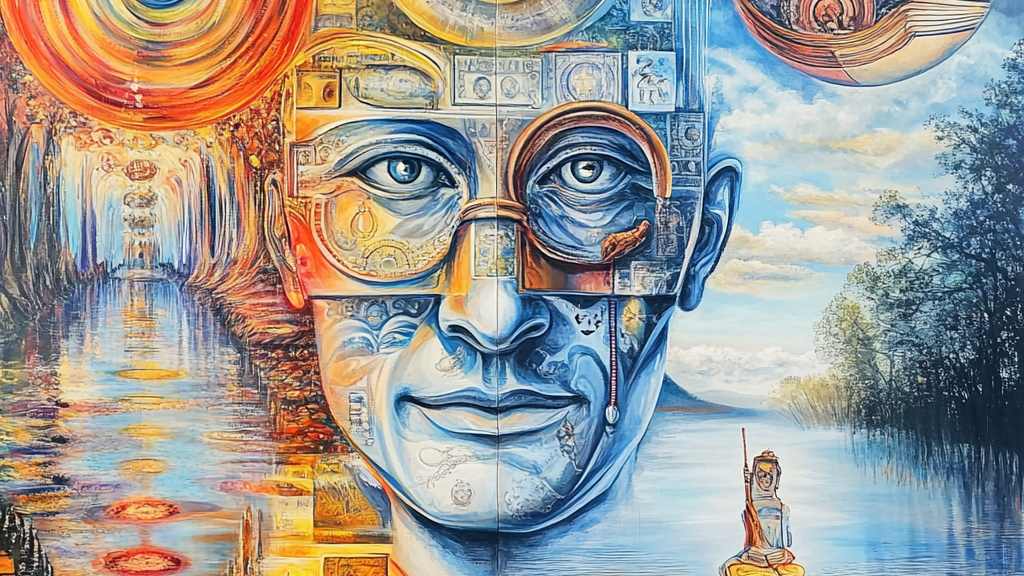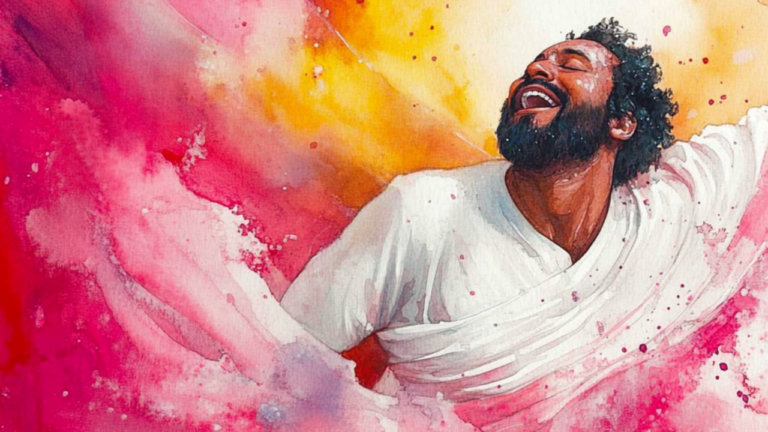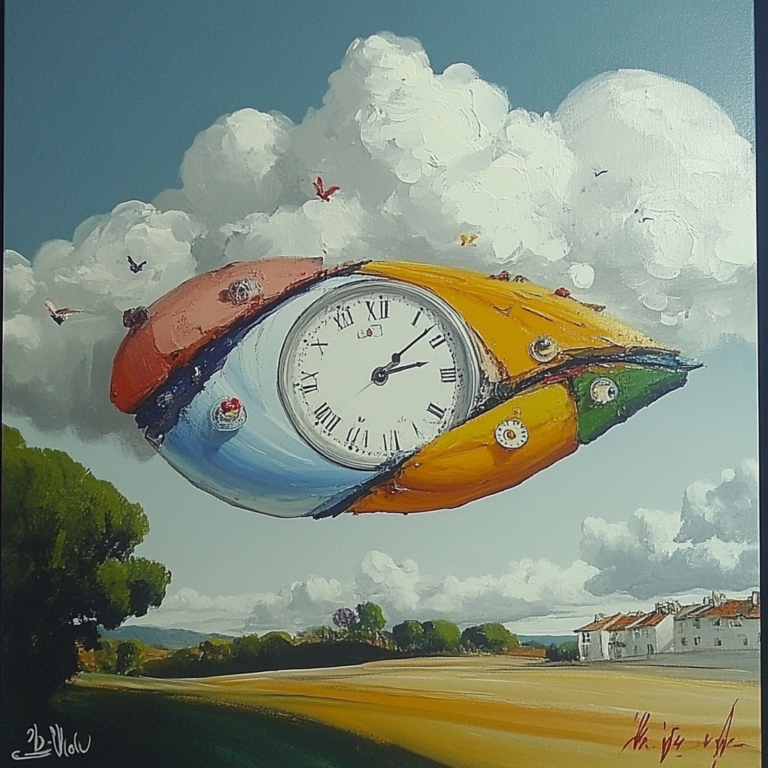You only see what you are ready to see!
A Journey Through Perception, Growth, and Awareness
Human perception is not a simple act of registering reality; rather, it is deeply intertwined with the mind’s capacity to interpret and integrate information. Psychologists often note that people don’t truly “see” something until they are psychologically and emotionally prepared to perceive it. This concept has profound implications across personal growth, spirituality, education, storytelling, and even science. Let us explore this idea through various lenses, weaving together insights from psychology, mythology, spirituality, history, literature, and the transformative ideas of myth and metaphor.
Psychological Readiness: The Gateway to Perception
In psychology, the phenomenon of perceptual readiness highlights how our minds filter the overwhelming flood of sensory data based on what we are prepared to notice. This explains why, at certain points in life, we can suddenly understand or appreciate something that previously eluded us. Whether it is grasping a complex concept, recognizing a life lesson, or seeing an opportunity, perception is guided by psychological readiness. I have had this happen to me repeatedly throughout my life. However, with sadhana one does see that insights come in a kind of a flow, and it is very gratifying when everything finally begins to make sense!
The mind acts as both a lens and a filter, allowing us to focus on information aligned with our current stage of mental and emotional evolution. This idea is vividly captured in the works of mythologist Joseph Campbell, who stated, “The hero gets the Adventure he is ready for.” Just as a hero in a myth must grow to face challenges, we, too, only “see” what we are prepared to tackle. In other words, your life until now was a preparation for what you are about to see and what you are about to do because of what you see!
The Transformative Power of Myth and Metaphor
Joseph Campbell’s work on myth and metaphor expands this understanding of readiness. He asserted, “Every myth is psychologically symbolic. Its narratives and images are to be read, therefore, not literally, but as metaphors.” Campbell’s approach reframes myth not as a relic of imagination but as a profound vessel of universal truth.
While rational minds often dismiss myths as falsehoods, Campbell argued that myths convey truths far deeper than those bound by logic. He famously stated, “Myth is much more important and truer than history. History is just journalism, and you know how reliable that is.” Myths address timeless human qualities such as beauty, honor, love, family, and community. Their layered meanings and universal themes speak directly to the emotional, psychological, and spiritual dimensions of life. For instance, in India, we really do not spend too much time trying to investigate or prove that Rama or Krishna existed. What is more important for us is the lessons we can learn from their lives. Again, in many ways Rama is a metaphor for Dharma – “Ramo Vigrahavan Dharmaha.”
Metaphors are more than a linguistic device – metaphor serves as a lens that magnifies meaning. Campbell observed, “Half the people in the world think that the metaphors of their religious traditions, for example, are facts. And the other half contends that they are not facts at all. As a result, we have people who consider themselves believers because they accept metaphors as facts, and we have others who classify themselves as atheists because they think religious metaphors are lies.”
By redefining myths and metaphors, Campbell transformed them into dynamic tools for understanding the world and our place within it. For storytellers, this perspective offers an opportunity to create narratives where every element—dialogue, action, relationships, and events—is charged with layers of emotional, psychological, and spiritual meaning. But storytelling does not have to be relegated to books and movies. We can integrate storytelling into pedagogy, simple daily conversations, parenting and also to train and inspire our employees.
Metaphors are meaning capsules
Metaphors are like capsules into which truth and meaning can be packed into a shape and form which allows it to transfer that meaning and insight to people transcending cultural and linguistic barriers. Of course, many metaphors are completely rooted in the culture and language of the society from which they originated. However, even metaphors have been translated and adapted from one culture to another. The meaning can completely change however.
Spiritual Insight: Questions as Mirrors
Indian spiritual gurus often use a seeker’s questions as a barometer of their spiritual evolution. The questions we ask are reflective of our current understanding, experiences, and aspirations. A wise guru provides answers tailored to the seeker’s readiness, nudging them gently toward their next step on the spiritual path.
This personalized approach recognizes that insights cannot be imposed prematurely. As the Zen saying goes, “When the student is ready, the teacher appears.” The teacher’s role, much like that of a guide on a journey, is to illuminate the next milestone, not the final destination – to show the way but allow the student to walk on it himself. There is another Zen saying, “Buddha’s enlightenment solved his problem, now you go and solve your problem!”
And as Sri Aurobindo says, nothing can be taught. I remember reading somewhere, “If you try to teach a man, he will not learn” – attributed to Bertrand Russell. To that someone has this offered this solution (I cannot remember who said this right at this moment): “A man must be taught, as if naught; and a thing new proposed as if a thing forgot!”
Metaphors can be pedagogical tools
Metaphors can help you explain a complex concept by helping students encounter the unknown through what is already known to them. Coming up with instant metaphors is at once a creative art and a science as well. I believe anyone can learn to come up with meaningful metaphors. I plan to run an experiment to test out my belief.
Historical Anomalies: The Invisibility of the Unimaginable
This is something I read long ago as an introduction to a book on mathematics. When Spanish ships landed on the shores of Pacific islands, the indigenous people, having no concept of objects floating on water, could not “see” the ships. Their minds could not process the unprecedented sight. The islanders’ medicine man, however, was able to notice the subtle disturbance in the water and, through focused observation, eventually recognized the ships. This illustrates how readiness and context shape perception: we see only what our mental framework allows us to see.
Climbing the Mountain: A Gradual Revelation
The journey of understanding can be likened to climbing a mountain. At the base, our view is limited to what surrounds us. As we ascend, new vistas unfold, and our perspective broadens. By the time we reach the summit, we can see the entire mountain and its surroundings—a metaphor for achieving clarity and wisdom after a journey of growth. That is why when a man at the summit tries to describe what he is seeing from his vantage point, the people down people often are not able to relate to what he is saying. The funny thing is when we finally understand what someone is “saying” (which is audio), we often exclaim, “I see what you are saying!” (which is visual). This is because we convert information into insight using a visualization process. If we don’t understand what someone is saying, we might say, “I am drawing a blank!”
The poet T.S. Eliot captures this beautifully in his lines:
“We shall never cease from exploration,
And the end of all our exploring
Will be to arrive where we started
And know the place for the first time.”
This cyclical journey of discovery emphasizes that understanding deepens through experience, reflection, and iteration.
Education: Repetition with Depth
In school, many of us encounter the same topics year after year—fractions, photosynthesis, the scientific method—but with increasing depth and complexity. This is no accident; it mirrors how human understanding evolves. Each new layer builds on the last, enabling us to revisit earlier concepts with fresh eyes and greater insight. This iterative learning process reflects our growing capacity to perceive and integrate knowledge.
The Scientific Method: Seeing Through Iteration
The scientific method provides a structured way to expand our understanding. It begins with a hypothesis, a preliminary guess based on limited knowledge. Through observation, experimentation, and analysis, we refine our understanding step by step. Each iteration brings us closer to the truth, much like turning the pages of a novel brings us closer to its resolution.
The iterative nature of science reflects how human perception evolves: we start with a fragment of understanding and gradually build a comprehensive picture.
A Flexible Mindset: Letting Go of “Foolish Consistency”
Growth requires the courage to let go of rigid beliefs and embrace new perspectives. Ralph Waldo Emerson captures this idea in his famous observation:
“A foolish consistency is the hobgoblin of little minds.”
Consistency for its own sake can trap us in outdated paradigms, blinding us to new insights and opportunities. True growth demands flexibility—a willingness to adapt as our perception deepens and expands. This mental agility is what allows us to move beyond old patterns and see the world anew.
Ultimately all learning involves a certain amount of pain that comes from having to give up rigidly held beliefs!
Synthesis: A Path of Perpetual Growth
Whether in psychology, mythology, spirituality, history, literature, or science, the recurring theme is clear: we perceive, learn, and grow incrementally, aligned with our readiness. Insights, truths, and revelations are not static; they evolve with us, appearing when we are prepared to receive them.
This understanding offers a profound lesson: rather than rushing toward conclusions or forcing insights, we should focus on preparing ourselves for growth. By cultivating awareness, curiosity, and openness, we align ourselves with the natural rhythm of discovery. As we climb the mountains of our lives, turn the pages of our unique stories, and explore the unknown, we move closer to seeing the unseen and understanding the yet-to-be-understood. Life’s journey, much like a myth, unfolds in layers—each offering a richer and deeper view of the truths that define our existence.
However, if you are patient and observant, you will realize that it was always about the journey – a journey of learning and discovery. And that is the destination!
ॐ असतो मा सद्गमय ।
तमसो मा ज्योतिर्गमय ।
मृत्योर्मा अमृतं गमय ।
ॐ शान्तिः शान्तिः शान्तिः ॥
Om Asato Maa Sad-Gamaya |
Tamaso Maa Jyotir-Gamaya |
Mrtyor-Maa Amrtam Gamaya |
Om Shaantih Shaantih Shaantih ||
Meaning:
1. Om, guide me from illusion to the truth of my eternal self.
2. Lead me from ignorance to the light of spiritual wisdom.
3. Take me from the transient world to the eternal realm of self-realization.
4. Om may there be peace, peace, and peace everywhere.
5. May all experience auspiciousness.
6. Om, peace, peace, and peace.








Thought provoking

Profound.
vor14y